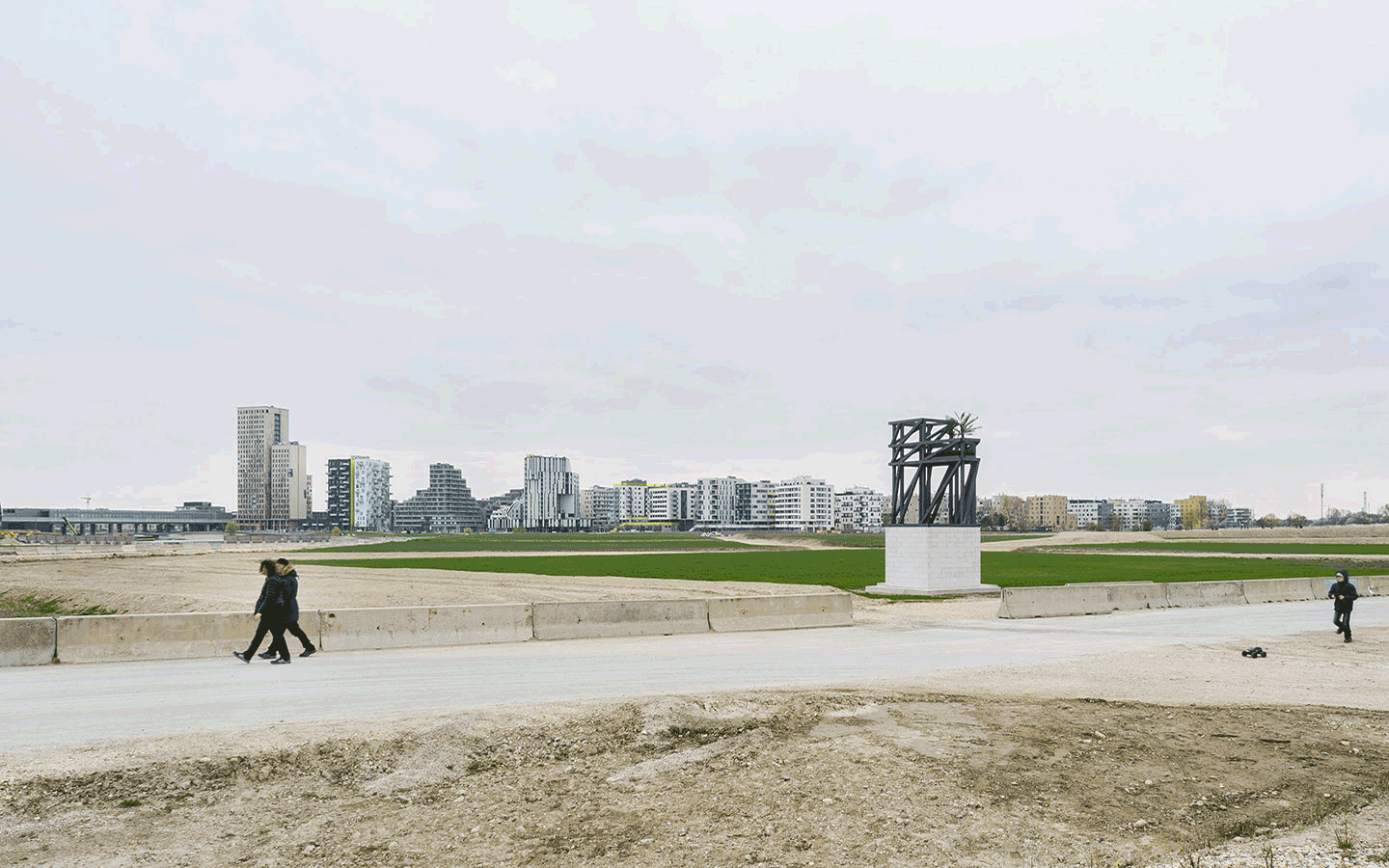Transfer
March 24–December 15, 2021
South of Nelson-Mandela-Platz, near Sonnenallee
1220 Vienna
Austria
Christian Odzuck reflects on today’s urban planning premises in his work Transfer. His work, which oscillates between shell construction and ruin, is realized in the middle of a development area in aspern Seestadt, currently Vienna’s largest urban development project in the east of the city. The architectural sculpture was created at the invitation of KÖR Kunst im öffentlichen Raum Wien (Public Art Vienna).
The new Viennese district aspern Seestadt has been under construction since 2009. With more than 11,500 apartments and spaces for thousands of local jobs, the project is one of the largest urban expansion projects in Europe. The project will be realized in various construction phases beyond 2030. Every year, new buildings and infrastructures will be added.
Christian Odzuck is interested precisely in this intermediate state and the constant transformation. In contrast to economic and rational considerations, Odzuck sets an enigmatic place with Transfer (2021). The temporary installation appears like a construction site within the construction site on the daily changing terrain of aspern Seestadt. The work has been conceived as a spatial sketch or backdrop that enters into a dialogue with the already completed parts of the new neighborhood and focuses on the process of construction as its subject.
While Transfer ties in with the aesthetics and ideas of the Seestadt on the one hand, it opposes and challenges them on the other. From some perspectives, the artificial palm trees on the top terrace—visible from far away—resemble a mirage that appears and yet remains intangible and unreal.
Odzuck’s architectural sculpture recalls, among other things, the myth of the Hanging Gardens of Semiramis and the idea of floating buildings—an idea deeply rooted in our culture that testifies to the human mastery of nature and the display of power in our built environment. A seemingly self-contained narrative springs from architectural fragments and artificial vegetation. While the aspect of sculptural appearance initially pushes itself into the foreground, the sculpture becomes a projection surface and a space of possibility for reflecting on urban structural development on closer inspection and examination.
It is precisely the exchange with the surroundings and the integration into the urban structure that is essential for the work. Transfer is closely linked to pressing issues of our time: How do we want to live? What will the city of the future look like? Which social processes shape our current urban agglomerations?
Odzuck stands for a radical expansion of the concept of sculpture in the direction of architectural and urban dimensions. In this context, Transfer can be understood as a condensed image of urban development, reflecting it as a living process that is subject to permanent change.
Christian Odzuck, born 1978 in Halle/Saale, Germany, lives and works in Essen, Germany.


